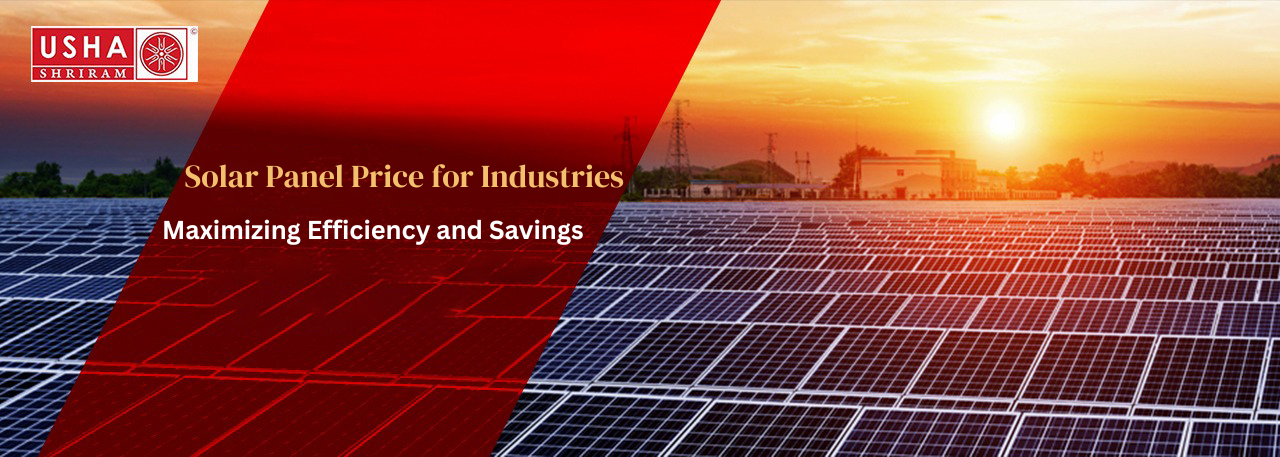2024 Trends Understanding the Dynamics of Solar Panel Prices for Industries
2024 Trends Understanding the Dynamics of Solar Panel Prices for Industries
We should address the glaring issue at hand: affordability. 2024 paints a promising picture of solar panel price for industries. Specialists foresee a continued decline, energized by a trifecta of elements:
1. Envision a production line producing solar panels. As solar panel production goes up, manufacturing costs will decline. This means more reasonable panels for modern purchasers.
2. Development exceeds all logical limitations in the solar circle. Consider cutting-edge cell designs, enhanced materials, and simplified manufacturing procedures. These headways continually push the limits of effectiveness and cost decrease.
3. Many players are competing for your business in the global solar market, which is a thriving landscape. This means competitive pricing and appealing deals for industrial clients.
While forthright expenses are urgent, always remember that solar panels are awesome investments, not costs. Their long life expectancy and minimal maintenance mean critical long-haul investment funds on power bills. Reduced dependence on the grid and its volatile prices would be good for your wallet and the environment.
Past the Sticker Price: A Range of Advantages
The charm of solar panel price for industries goes past simple numbers. Here is a kaleidoscope of more extensive advantages:
1. Escape the grip of the grid! Reduce reliance on fossil fuels and volatile energy prices to maintain stable energy costs and protect operations from disruptions from the outside. Envision no more stresses over value changes or blackouts upsetting your production line.
2. Become a green light! Exhibit your commitment to environmental obligation, drawing in eco-conscious clients and financial sponsors. Envision your image relaxing in the positive shine of sustainability.
3. Numerous districts offer liberal appropriations and tax cuts to boost modern solar adoption. Influence these to add to the arrangement and make the switch significantly more financially smart. Envision government support moving your solar journey forward.
Fitting the Arrangement: Industry-Specific
Remember, that "one size fits all" doesn't have an effect or even apply to the solar. There are different and interesting requirements and considerations for many industries. Here is a short look at the different scenes:
1. Industries that use a lot of energy: Envision an immense range of solar panel instalments to adjust your energy utilization. Think steel production or manufacturing lines or chemical plants washed in sunlight, making their perfect power. Solar panels like bifacial panels, which get light from the two sides and single-focus point trackers, help with sun exposure and further reduce costs for these applications.
2. Food and drink: Envision solar panels powering refrigeration units, nurseries, and handling offices. Think of farms washed in sunlight to keep your products new, prevent decay, and ensure consistent operations.
3. Manufacturing: Think about incorporating solar panels into the design of your roof or using carports to generate solar power. Think creation lines mumbling with clean energy, diminishing your carbon impression and further developing your picture. The rising affordability of thin-film solar panels, suitable for tremendous, level surfaces, is making solar energy more available for manufacturing facilities.
Industry-Specific Examples of Solar Success:
1. ArcelorMittal, a leading steel manufacturer, has installed an enormous 74MW solar plant in Belgium, lessening their dependence or reliability on the main power grid and also reducing CO2 discharges by 32,000 tons yearly. This project displays the cost adequacy of the enormous scope of solar energy-explicit industries.
2. Plenty, a vertical farming company, utilises housetop solar panels to power their indoor farms, decreasing energy costs and demonstrating their commitment and responsibility to sustainable agriculture practices. Their success stories feature the promotion of the adoption of BIPV solutions in the food and drink industry.
3. Tesla's Gigafactory in New York flaunts a 70MW solar carport, producing almost 50% of the facility's energy needs. This shows the way that thin-film solar panels can truly use huge, flat surfaces in manufacturing settings.
Environmental Effect: A More Brilliant Shade of Green
Putting resources into industrial solar isn't just about cost reserve funds; it's tied in with protecting our planet. A new report by the International Renewable Energy Agency (IRENA) estimates that widespread industrial solar adoption by 2050 could:
1. Lessen worldwide CO2 emissions by 92 gigatons: Envision a world with cleaner air, better networks, and moderate environmental change influences.
2. Prevent 5.4 million untimely deaths: Envision a future where air contamination-related health problems are fundamentally diminished.
3. Save 1.2 trillion cubic meters of water: Envision a world with more feasible water management practices.
The Future Ahead: Embracing a More promising time to come
The future of industrial solar is unquestionably splendid. With solar panel price for industries in a descending direction, combined with industry-explicit developments and government incentives, an opportunity to embrace this clean and smart innovation is now. Thus, outline your course towards a sustainable future, guided and powered by the sun!
